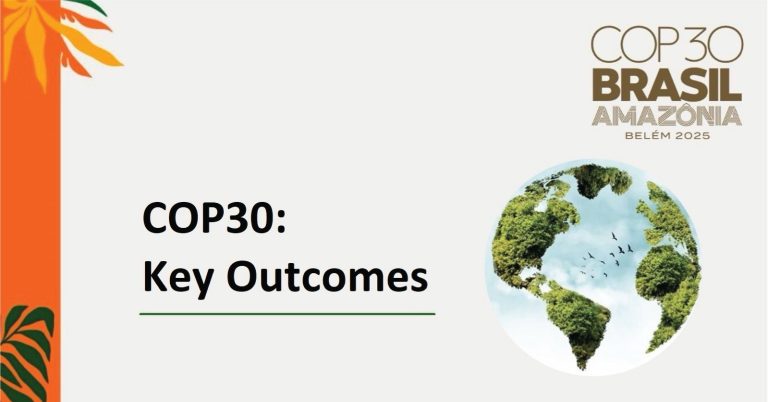As COP 30 concluded, the conference showcased both meaningful steps forward and clear reminders of the challenges that remain. While several technical pillars of the climate framework progressed, the negotiations reaffirmed that the world is still struggling to align ambition with action. This year’s summit underscored the urgency of implementing practical, large-scale solutions to meet the goals of the Paris Agreement.
A Reality Check on Global Climate Action
Across most discussion tracks, delegates found themselves navigating long-standing divides between developed and developing nations. Climate finance, adaptation, and equitable transitions remained the most difficult areas to resolve. Despite this, COP 30 delivered several important advances that will help shape the global climate agenda over the coming decade.
Key Achievements
- Strengthening the Climate Finance Architecture
One of the most closely followed outcomes of COP 30 was the renewed focus on rebuilding trust in the global climate finance system. Countries acknowledged that predictable, transparent, and accessible financing remains a foundational requirement for developing nations to pursue meaningful climate action.
Initial pledges were made toward enhancing adaptation finance and supporting vulnerable regions. However, the larger question of how to scale financing to the trillions required annually remains unresolved and will carry over to future negotiations.
- Progress on the Global Goal on Adaptation
The Global Goal on Adaptation saw clearer structure and direction this year. Negotiators agreed on:
- A strengthened framework for planning and measurement
- National-level indicators to track progress
- Greater support for climate-vulnerable regions
This marks a significant move toward making adaptation outcomes measurable and comparable across countries.
- Expanded Consensus on Non-Market Cooperation (Article 6.8)
COP 30 achieved one of its most notable breakthroughs in the area of non-market cooperation. Countries endorsed guidelines to advance:
- Technology transfer
- Capacity building
- Policy coordination
- Collaborative approaches that do not rely solely on carbon markets
These mechanisms are expected to unlock new pathways for international climate partnerships beyond traditional market-based tools.
- Clearer Pathway for Agriculture and Food Systems
Agriculture featured prominently at this year’s conference, reflecting its central role in both emissions and resilience. The adopted roadmap includes:
- Sustainable soil management
- Efficient water use
- Methane reduction strategies
- Support for smallholder farmers and climate-smart practices
This provides a structured direction for transforming global food systems in a warming world.
Areas Where Progress Was Limited
- Climate Finance Delivery Gap
Despite renewed commitments, the gap between required and delivered climate finance continues to grow. A long-term finance goal beyond 2025 still lacks clarity, leaving developing countries uncertain about how to plan their national climate strategies.
- Mitigation Ambition
Many large emitters did not significantly enhance their national climate plans. Science-based emission reduction pathways remain politically sensitive, and the pace of progress is far from sufficient to maintain a 1.5°C trajectory.
- Just Transition Framework
Although countries reaffirmed the importance of fairness and social inclusion in the energy transition, they were unable to agree on a unified international framework. The transition remains uneven across regions, with wide disparities in technology access, employment impacts, and financial capacity.
The Road Ahead
COP 30 made it clear that the coming years must be focused on delivery and implementation. Key expectations moving forward include:
- A defined long-term climate finance framework
- Updated national climate plans aligned with the 1.5°C target
- Stronger focus on adaptation and resilience
- Greater transparency and accountability in climate commitments
The conference served as a reminder that while global consensus is often difficult, decisive climate action cannot wait. Countries must now translate negotiated text into policy, investment, and measurable progress.






